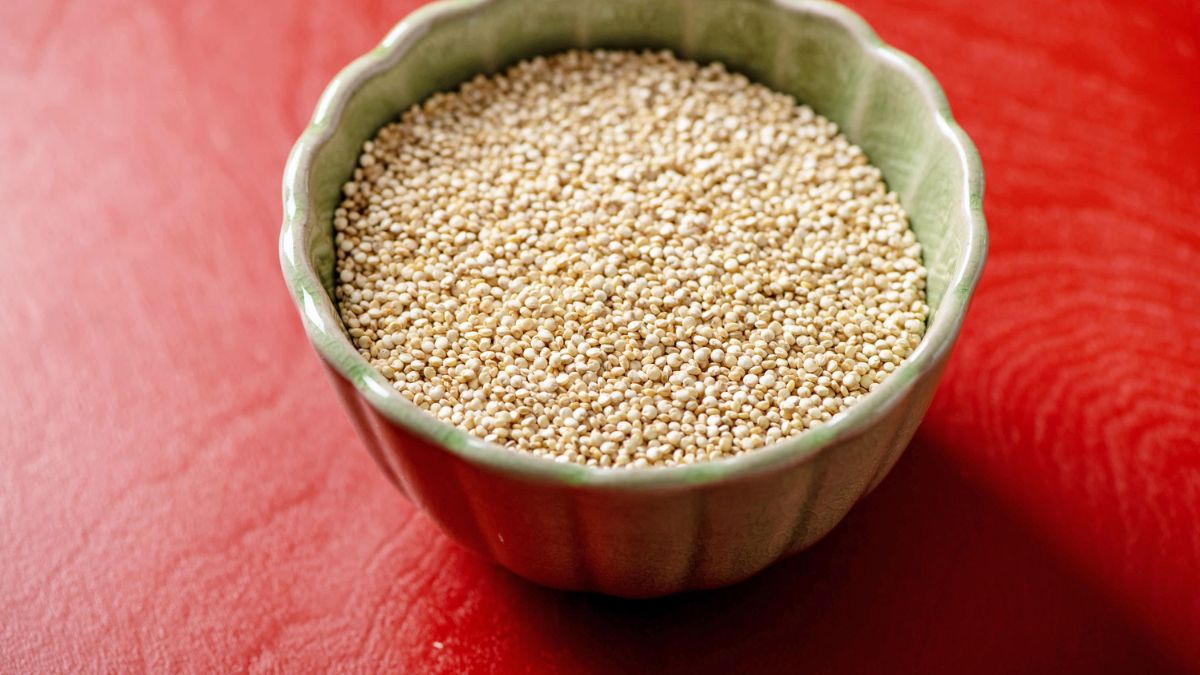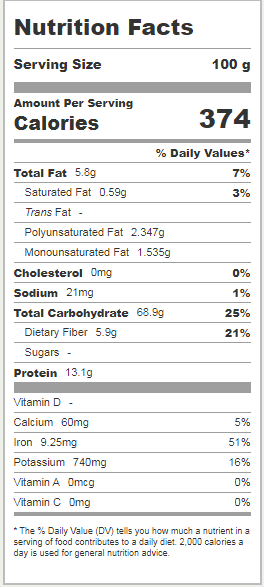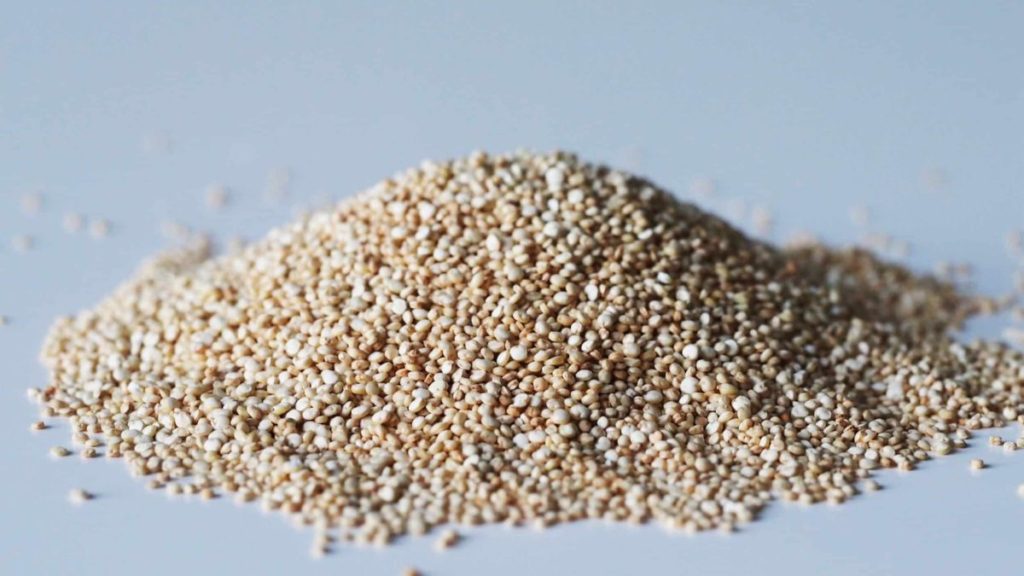If you’re looking for quinoa nutrition facts, you’ve come to the right place. This ancient grain is gluten-free, high in protein, and loaded with other nutrients. It’s also a good source of vitamins B, calcium, iron, manganese, phosphorus, and magnesium. And the best part: it’s also free of gluten, making it perfect for anyone with a gluten-free diet or sensitive to certain grains. When cooking quinoa, just like rice, it’s best to wash it thoroughly and cook it in water or broth. Then, cook it in a ratio of two parts water to one part dry grain. You’ll have about three cups of cooked quinoa for every dry grain. to know quinoa nutrition facts 100g, read further.
Aside from its low glycemic index, quinoa is a good source of fiber, magnesium, and vitamin E. Magnesium is essential for regulating blood sugar levels. At the same time, iron helps transport oxygen throughout the body. Vitamin E helps fight free radicals and is an antioxidant that protects cells from damage. Potassium helps regulate sodium levels and keeps blood sugar stable. The benefits of quinoa are numerous, and the health benefits are sure to keep you coming back for more.
Quinoa Nutrition Facts 100g
According to USDA, one hundred grams of quinoa contains 374 calories. While these are modest energy sources, they may be comparable to major cereals and pulses. The protein content of quinoa is high, with 13.1 grams of protein. Quinoa contains all nine essential amino acids, including lysine, usually missing in grains. This makes it an ideal option for those looking for a gluten-free diet.
If you’re a vegetarian or vegan, you need protein sources other than animal meat, and you’ll find 13.1grams of protein. These amino acids are essential for muscle development and immune activity, and quinoa is an excellent source of lysine. The amino acid also has anti-inflammatory properties, making it ideal for vegans and vegetarians.
What is Quinoa?
The Whole Grains Council says that quinoa is a gluten-free, whole-grain carbohydrate and protein (meaning it contains all nine essential amino acids). Most of this is common knowledge. But a lot of people aren’t sure whether quinoa is whole grain or not. So, technically speaking, the Chenopodium quinoa plant’s seed is what we all know and love as quinoa, which means it is not a grain. Whole grains, also called cereal grains, are seeds that come from grasses, not plants.
But how we eat quinoa is similar to other whole grains. Because of this, people who study nutrition call it a “whole grain.” Or, if you want to get technical, you could say that quinoa is a “pseudocereal,” which is a term for foods cooked and eaten like whole grains but not grasses. But most people use the term “whole grain,” which may not be completely accurate. From a plant’s point of view, it’s not a grain. But it’s often called a “pseudo-grain” because it has the same nutrients as cereal grains and is eaten the same way. Quinoa was first grown for food in the Andes about 7,000 years ago.
It was called “the mother grain” by the Incas, who thought it was holy. Even though it is now grown in many places, most of it is still made in Bolivia and Peru. The rest of the world didn’t know much about it until recently. Since then, it has become very popular because of how healthy it is and how many nutrients it has. It also grows easily in many different conditions. The UN even named 2013 “The International Year of Quinoa” because it has many good qualities and could help fight world hunger. Quinoa is also a popular grain because it doesn’t contain gluten. This means that people who don’t eat gluten or have celiac disease or wheat allergies can eat it.
What are the Different Types of Quinoa?
The Whole Grains Council found more than 120 kinds of quinoa, which is surprising. Even though the grain can be of many colors, including purple, the most common colors of quinoa in American grocery stores are white (also called ivory or yellow quinoa), red, and black.
All three kinds of quinoa cook and taste differently, which is interesting. After cooking, white quinoa has a fluffy texture, but red and black quinoa tend to keep more of their shape and color. White quinoa tastes mild and bitter, while red quinoa has a stronger and chewier flavor. Black quinoa tastes a bit crunchier and sweeter than either red or white.
After 2014, when it became very popular, quinoa was mostly sold as seeds. But since then, many different versions of the product have come out. Now, every grocery store has quinoa flour and quinoa flakes. Quinoa flakes are steamed quinoa rolled into thin, almost clear flakes to make cooking faster.
What are the Possible Health Benefits of Quinoa?
Over the years, there has been a lot more research on quinoa. This is partly because of the hype in 2014 but mostly because of the seed’s health benefits. It is thought that the nutrient-rich “fake cereal” could lower the risk of some diseases and be a great protein-packed replacement for gluten-free diets.
Because they have a lot of fiber, whole grains like quinoa have been thought to protect against some types of cancer. One study from The Journal of Nutrition suggests that the dietary fiber in whole grains may help lower LDL, or “bad,” cholesterol levels, improve digestive health, and possibly lower the risk of gastrointestinal cancers, like colon cancer.
A study published in The American Journal of Clinical Nutrition found that people who eat foods high in magnesium are less likely to have a stroke. Eating quinoa regularly has been linked to better heart health because it has a lot of magnesium. One cup of cooked quinoa has about one-third of the daily amount of magnesium that the USDA recommends you get.
Can Eating Quinoa Help you Lose Weight?
Quinoa can make you feel full because it is full of protein and fiber. Sharp agrees with this. “Quinoa is a low-glycemic-index carbohydrate because it’s high in fiber and protein. This means you’ll feel full longer after eating it, which may help you eat less over time.” But even though quinoa is good for you in many ways, it is by no means a low-calorie food (just one cup of plain, cooked quinoa is 222 calories). Yes, quinoa can help you lose weight if you eat it in small amounts, but it depends on how much you eat.
Are There Any Side Effects to Eating Quinoa?
Quinoa seems to be as healthy as we hear, especially if you don’t eat too much of it. it is also very safe to eat all the time. “The only thing that might go wrong is that the natural coating on the outside of the grains, saponin, might make your stomach upset,” Even so, this is easy to stop before you eat. Sharp says, “Make sure to rinse the quinoa well before you use it to reduce the chance of an irritation.”
You Could have an Allergy.
Both an allergy and intolerance to quinoa are real. You may have inflammation in your skin, lungs, and digestive system if you have either of these conditions. This could cause diarrhea, stomach pain, nausea, hives, eczema, and itching. If you have a severe allergic reaction to quinoa, your heart rate may go up, your skin may turn pale, your blood pressure may drop, and you may not be able to breathe, to name a few symptoms.
If you’ve eaten quinoa before without any problems but now have one of the above symptoms, you may be allergic to saponin, a chemical found in the coating of quinoa. Saponin helps protect the quinoa plant from bugs and mold, but it can also make some people feel uncomfortable. Soak quinoa in water for 30 minutes to get rid of this chemical, and then rinse it before cooking.
You May Feel Bloated or have Gas.
Did you know that there is a lot of fiber in quinoa? There are more than 5 grams of fiber in one cup of cooked quinoa. According to the USDA’s current dietary guidelines, adult women need between 22 and 28 grams of fiber daily, while men need between 28 and 34 grams daily. But since fiber is an indigestible carbohydrate, too much of it can make you feel full. If you’re not used to eating quinoa or any other high-fiber food, and you eat a lot of it all at once, you might feel full or have gas.
It Could Cause a Chron’s Disease Flare-up.
People with Chron’s disease may need to avoid certain foods because they can cause flare-ups, which can cause diarrhea, nausea, and stomach cramps. Some of these are the bread and starches like whole grains, brown rice, and quinoa, which are high in fiber. If you have Chron’s disease, you might want to stay away from quinoa so you don’t get stomachaches.
It Could Increase your Risk of Kidney Stones.
If you are prone to getting kidney stones, you may need to limit your intake of quinoa and other plant-based foods that contain oxalate or oxalic acid. The good news is that your body naturally gets rid of the substance through urine. However, people prone to kidney stones or kidney disease may need to watch how much quinoa, leafy greens, and certain legumes they eat. This happens because the substance binds to calcium as it leaves the body, making it more likely that a kidney stone will form.
Is Quinoa Good for Hair Growth?
Quinoa contains nine essential amino acids that can naturally strengthen hair follicles and repair hair by feeding and moisturizing the scalp. Studies have shown that humectant, a natural substance, forms a layer on the scalp that protects it from dust and pollution. Quinoa has all of the amino acids that your body needs. It is one of the few complete plant proteins and has many uses for hair and skin. It helps hair grow, fixes broken hair (like split ends), and keeps hair’s color.
Conclusion
Quinoa has more protein than most cereals, and the amount is comparable to other whole grains such as wheat, rye, and corn. Processing also removes about 30 percent of the phytic acid, so it’s important to wash the seeds before eating them. Quinoa is also lower in sodium, potassium, and manganese, and its high protein content makes it a good choice for people looking to increase their protein intake.
Although quinoa isn’t technically a grain, it is a pseudocereal. Because of its composition, it resembles whole grains and has a similar nutritional profile. It can be ground into flour and used in recipes just as you would wheat. Quinoa is also an excellent source of protein, with fifteen percent protein and a good amino acid balance. The quinoa seed is a great source of fiber and essential amino acids.




